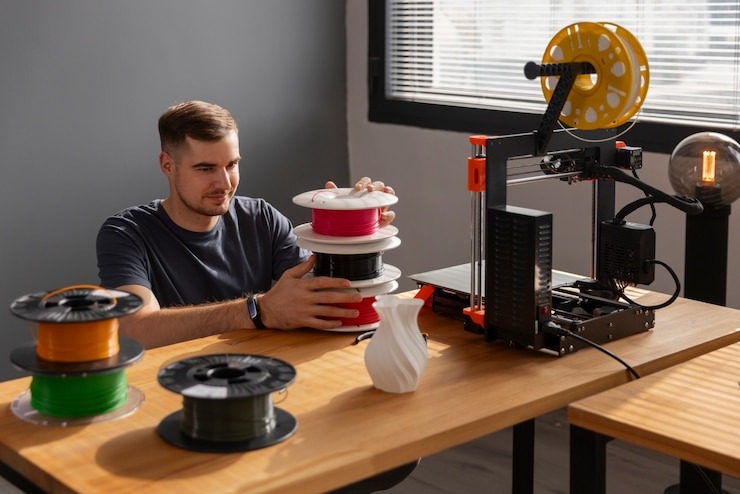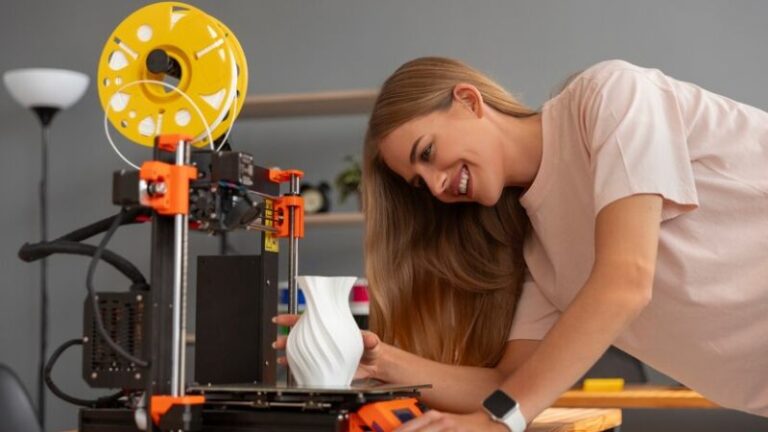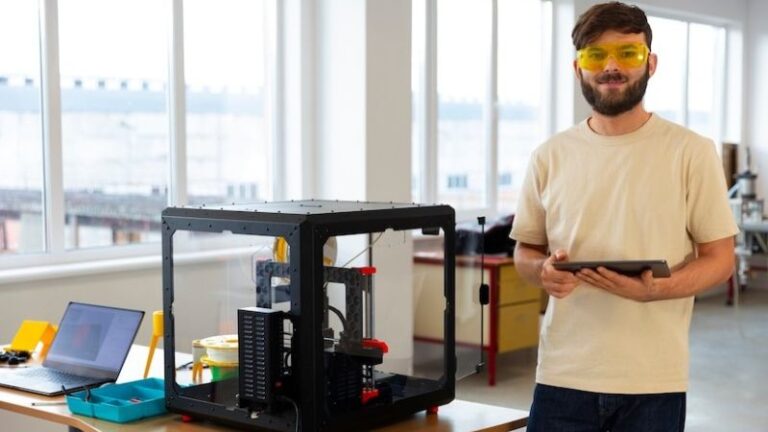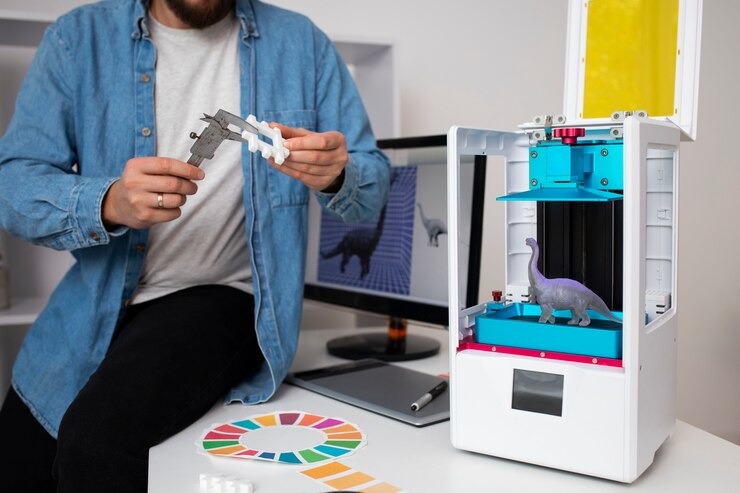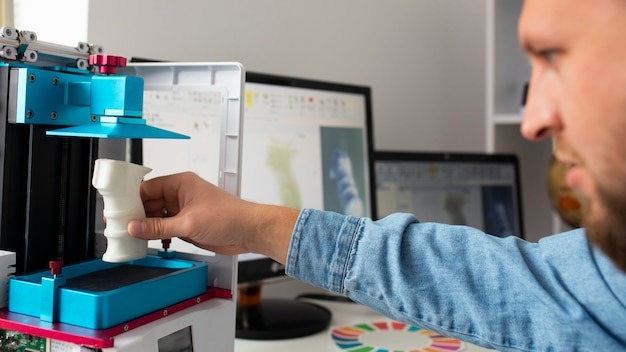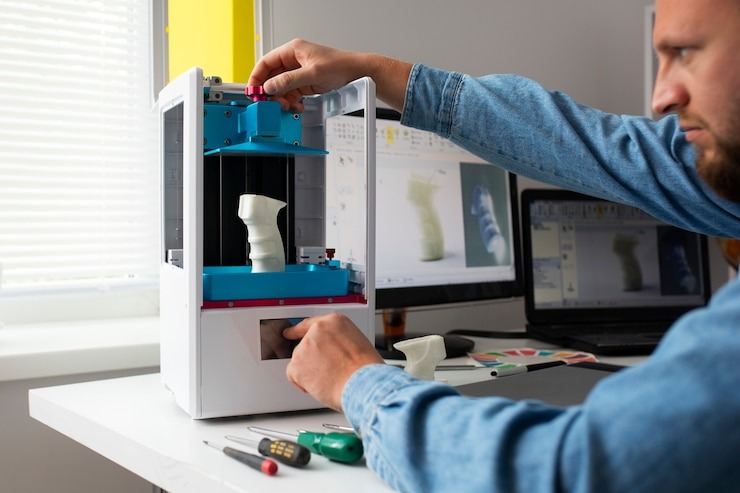SLS 3D Printing Services in India A Complete Guide
3D printing has really transformed the face of manufacturing in these rapidly developing technological times. The demand for SLS 3D printing services in India is expected to keep growing. The degree of efficiency, cost-effectiveness, and versatility that SLS 3D printing offers makes it one of the most sought after techniques. Whether a startup or large-scale industrial manufacturer looking forward to prototyping, SLS 3D printing service and its applications mean everything.
This guide covers everything, from how SLS 3D printing works to finding the best providers of SLS 3D printing services in India.
What is SLS 3D Printing?
Definition of Selective Laser Sintering (SLS): SLS stands for Selective Laser Sintering. In brief, this is a 3D printing additive technique that uses a laser to melt a layer of powder-like materials in preparation for fusion. Unlike other 3D printing techniques, which use liquids or filaments, SLS produces an object by fusing together the powdered plastic, metal, or composite material through sintering. That is to say, the object produced through SLS 3D printing is hard and rigid, with a very high accuracy.
How SLS 3D Printing Works
In SLS 3D printing, a thin layer of powder, like nylon, metal, or composite, is spread out. A laser melts the powder in the shape of the design. Then, the platform moves down a little, and a new layer of powder is added. This keeps going until the full object is created.
Key Benefits of SLS 3D Printing
• No Support Needed: SLS prints do not have extra material support. FDM or SLA does, but not SLS. The powder surrounding the print acts as support material, yielding way to complex geometries.
• Strength and Durable: Components created through SLS are extremely strong and can last a long time. Thus, they become suitable for functional prototypes and end-use products.
• Design Freedom: SLS allows the designer to create highly complex and detailed parts that cannot be manufactured using any conventional techniques.
Popular Materials Used in SLS 3D Printing
Commonly used materials in SLS 3D printing:
• Nylon (PA12, PA11): For creating flexible robust parts.
• TPU (Thermoplastic Polyurethane): For rubber-like applications
• Aluminum and Steel: Ideal for metal part manufacturing
• Glass-Filled Nylon: Offered with better stiffness and heat resistance.
Applications of SLS 3D Printing
SLS 3D Printing in Prototyping: SLS 3D printing is typically applied for producing proto-types that provide almost high resolution and quick turnaround for testing and validation of design. Companies in the industries of automotive, aerospace, and electronics have been employing SLS in making proof-of-concepts that would be able to test them rigorously.
SLS 3D Printing in Industrial Application: Low-volume production and spare parts manufacturing often employ the services of SLS 3D printing by industries in automotive, aerospace, and heavy machinery. This is because it is the most appropriate 3D printing technology for the production of performance-driven parts, due to the fact that complex geometries can be produced with robust parts.
Medical and Healthcare Applications of SLS 3D Printing: SLS technology has penetrated well into the healthcare industry, manufacturing custom prosthetic limbs, dental implants, and even surgical equipment. SLS ensures high definition and flexibility, hence very customized and fitting medical devices.
SLS 3D Printing in Producing Consumer Goods: From eyewear to fashion accessories, SLS 3D printing is making it easier to produce customizable and aesthetically pleasing consumer goods. With SLS, designers and manufacturers can experiment with complex shapes to ensure faster market entry at reduced costs.
How SLS 3D Printing Is Used in Aerospace and Automotive Sectors
SLS 3D printing is significantly essential to the production of light-weight materials in the aerospace and automotive industries, while functional part replacement and prototyping take on a significant role in the development process. By reducing material waste, SLS enables free design so these industries can innovate more promptly with efficiency.
Benefits of SLS Compared to Other Technologies
SLS vs. FDM (Fused Deposition Modeling): Unlike FDM that depends on filaments extruded during print time, SLS 3D printing can produce more complex designs without using supporting structures. For this reason, FDM is more widely applied by hobbyists and prototypes for simple models, whereas SLS is more preferred for industrial-grade detailed models.
SLS vs. SLA (Stereolithography): Although both SLA and SLS provide high-resolution prints, SLS is superior to the others since it makes possible functional and more durable parts. Although some visual prototypes show closer accuracy in SLA, SLS manages to develop visually appealing parts that can serve functionally.
Cost Effectiveness and Production Rate in SLS 3D Printing: While the entry price of SLS is relatively more expensive than FDM and SLA, the machine speed and cost per part for high-volume production make it economical for mass production. The 3D printing services using SLS are highly economical in terms of producing complicated, strong parts with little wastage.
Some Problems in SLS 3D Printing
Limited Material Range: While SLS 3D printing is versatile, because it can handle a wide array of materials, SLS is still limited compared to other methods such as FDM and SLA. These other methods allow for a greater variety of plastics or resins. Polyamides, metals, and composites make up the majority of materials for SLS.
Requirements for Post-processing SLS Printed Parts: In SLS 3D printing, post-processing is somewhat labor-intensive, involving clearing excess powder or smoothing the surface of printing. In some cases, coloring and coating are also required for parts. However, in general, the strength and durability of objects printed by SLS make all this worthwhile.
High Cost at First; Expensive Expertise: The type of equipment and knowledge employed for the establishment of SLS 3D printing demands heavy investment at the beginning. But to reduce these investments, most businesses depend on outsourcing their requirements to SLS 3D printing services.
Why opt for SLS 3D Printing Services in India?
Emerging Indian Industry of 3D Printing: India 3D printing market is exponentially growing. The SLS 3D printing service demand in India is following this trend because several organizations have now understood the benefits of additive manufacturing for prototyping and also for direct production.
More and more Quality SLS 3D Printing Providers: The ever-increasing numbers of SLS 3D printing service providers make quality SLS 3D printing available at every corner of the Indian industries.
Cost-Effectiveness of SLS 3D Printing Services in India: SLS 3D printing services in India are relatively cheaper compared to anywhere else in the world. In low volume or even custom production, sourcing from India can save one enormous amounts of money in production costs.
New SLS 3D Printing Technologies in India: Indian companies have brought the latest SLS 3D printing technologies that enable them to work on designs that will be so complicated with high precision and efficiency.
FAQs on SLS 3D Printing
1. What’s the Difference Between SLS and DMLS?
SLS is primarily utilized on plastics and some composite materials, while DMLS or Direct Metal Laser Sintering is primarily focused on metals.
2. How Long Does It Take to Complete an SLS 3D Printing Job?
SLS 3D printing can take anywhere from several hours up to days or even weeks to complete based on the complexity.
3. What Industries Benefit the Most from SLS 3D Printing?
SLS 3D printing is highly advantageous for the use of automotive, aerospace, healthcare, and consumer goods industries.
4. How Accurate is SLS 3D Printing Compared with Other Processes?
SLS 3D printing has great accuracy, especially in the manufacturing of intricate and detailed parts.
5. SLS 3D Printing Suitable for Production?
Yes, SLS 3D printing is entirely suitable for low-to-medium-volume production runs.
6. What Materials Shall Be Used for SLS 3D Printing?
Best materials for the SLS 3D printing are nylon (PA12, PA11), TPU, and glass-filled nylon.
Conclusion
SLS 3D printing is undoubtedly a revolutionary technology for the innovation of the industries since it can create durable, complex, and highly detailed parts. India is quickly becoming a center for SLS 3D printing services in the world. Manufacturers, designers, and engineers can obtain such solutions quite cheaply in India. SLS 3D printing services in India effectively and even economically solve prototyping and full-scale production issues.

